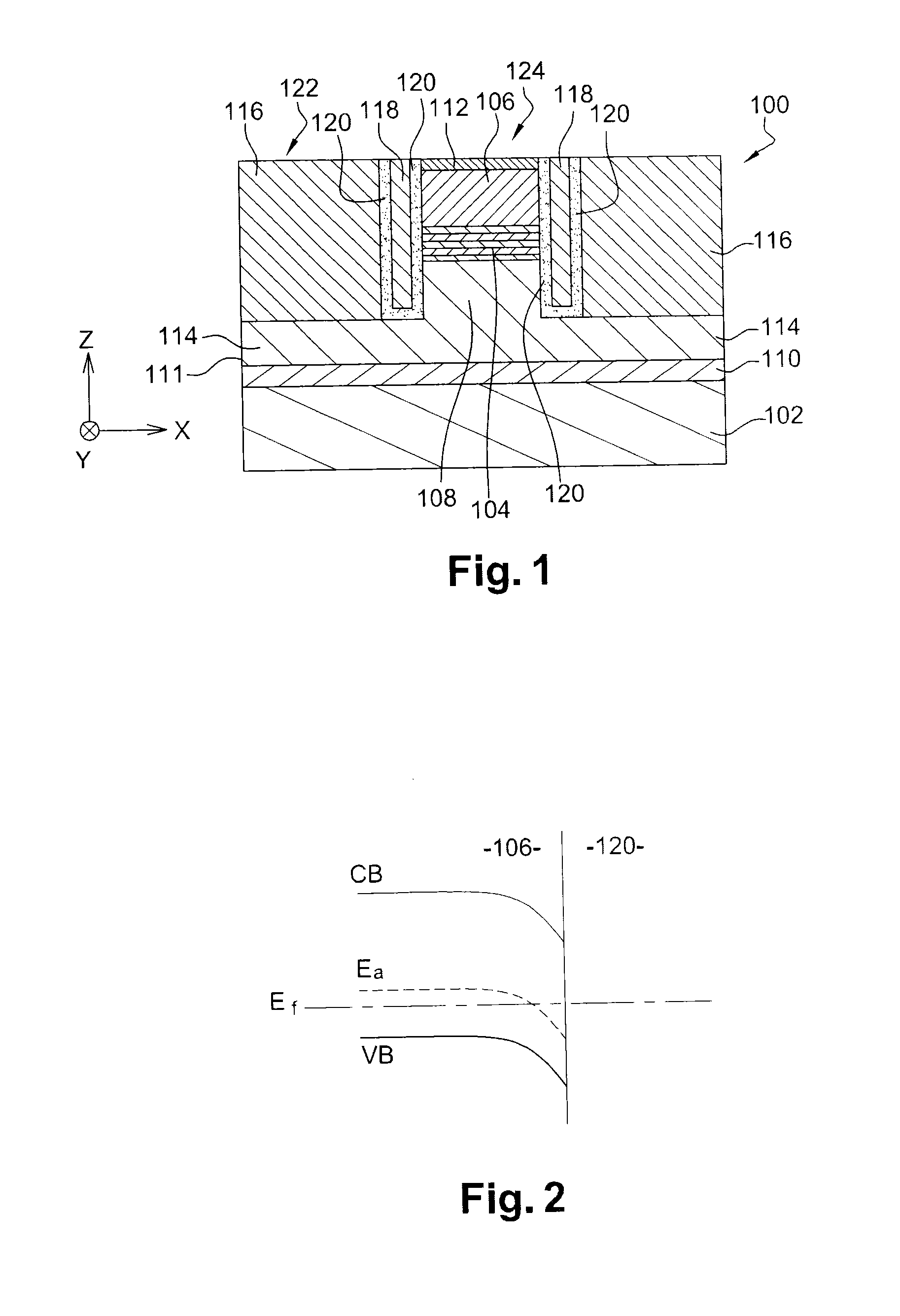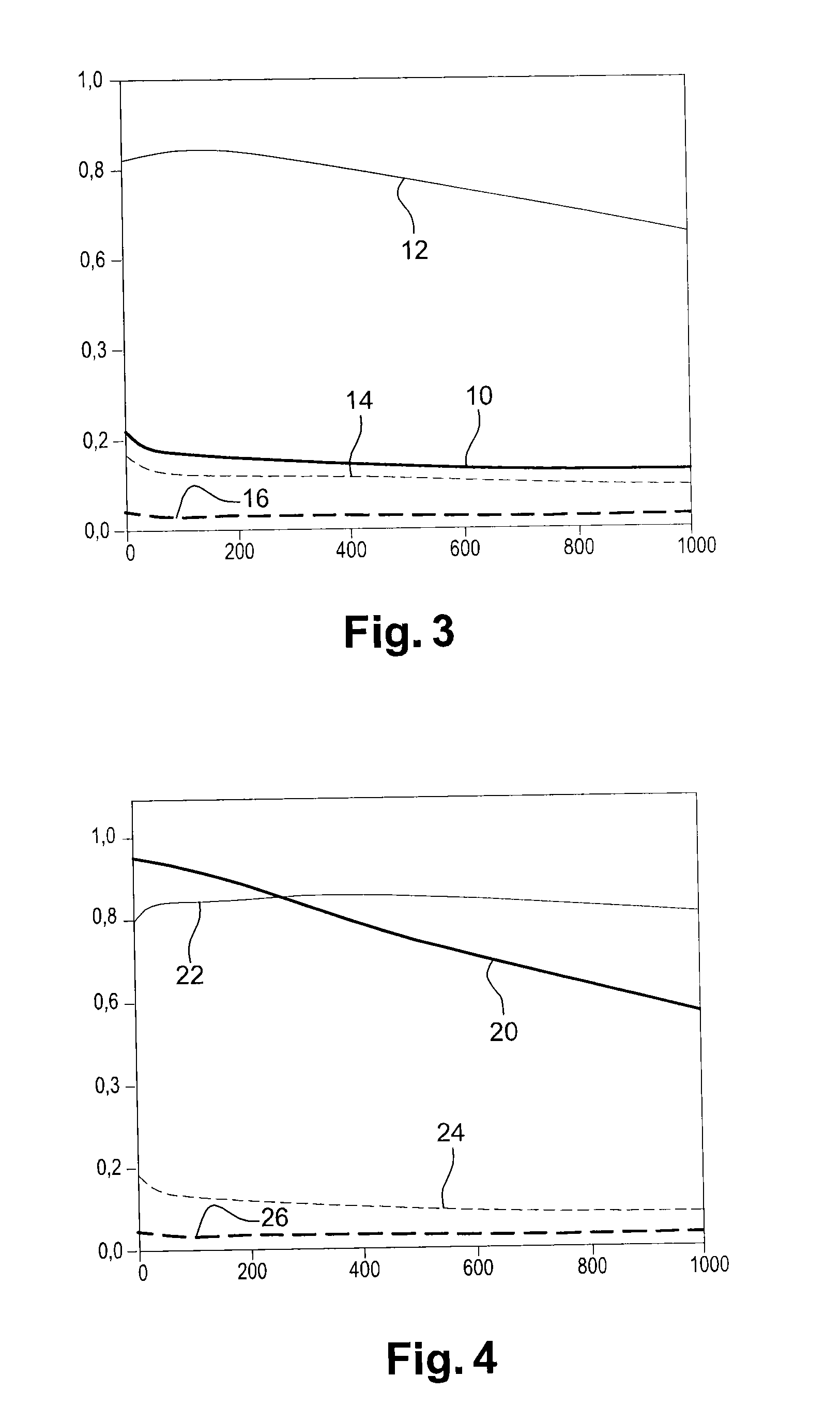P-n junction optoelectronic device for ionizing dopants by field effect
a technology of optoelectronic devices and field effects, which is applied in the manufacture of final products, basic electric elements, and radio frequency controlled devices. it can solve the problems of limiting the efficiency of this type of light-emitting diodes, limiting the efficiency of such a uv led, and the quantity of activated acceptors in algan is then extremely low, so as to achieve improved internal quantum efficiency and improve the effect of emission or detection efficiency
- Summary
- Abstract
- Description
- Claims
- Application Information
AI Technical Summary
Benefits of technology
Problems solved by technology
Method used
Image
Examples
first embodiment
[0101]The LED 100 is made by implementing an etching of a stack of different layers for forming the above described elements of the LED 100. In this first embodiment, the second semiconductor layer 111 forming the second semiconductor portion 108 is not however etched throughout its thickness in order to keep parts 114 of this second semiconductor layer 111 adjacent to the second semiconductor portion 108 so that these n-doped semiconductor parts 114 are electrically connected to a second electrode 116 of the LED 100, which herein corresponds to the cathode since the second portion 108 is n-doped. The second electrode 116 comprises for example a titanium layer with a thickness equal to about 20 nm overlaid by an aluminium layer.
[0102]The second semiconductor layer 111 forming the second semiconductor portion 108 and the parts 114 can be seen as comprising a structured upper face a first protruding part of which forms the second semiconductor portion 108, the second electrode 116 bei...
second embodiment
[0155]FIG. 12 depicts a side cross-section view of an optoelectronic device 100 according to an alternative of the previously described
[0156]In this alternative, a first part 123 of the second semiconductor portion 108 arranged between a second part 125 of the second semiconductor portion 108 and the active zone 104 forms a recess, or an indentation, with respect to the second part 125 of the second semiconductor portion 108. A first part of each of the second electrodes 116 penetrates throughout the second n-doped semiconductor layer 111 as well as the buffer layer 110 and directly rests on the substrate 102. A second part of each of the second electrodes 116 adjacent to the first part rests on an upper face 127 of the second part 125 of the second semiconductor portion 108, and is electrically connected to the second portion 108 of the mesa structure adjacent at this upper face 127. Each of the mesa structures 124a, 124b, and 124c is surrounded by the gate 118 which extends on a s...
third embodiment
[0159]FIGS. 13 and 14 respectively depict a schematic cross-section view (along the axis AA′ depicted in FIG. 14) and a schematic top view of an optoelectronic device 100, here a LED, according to a
[0160]The DEL 100 comprises a single mesa structure 124 which, in the example of FIGS. 13 and 14, has a substantially rectangular shape section, in the plane (X, Y), and is formed by the same layers of materials as those forming the mesa structure 124 of the LED 100 according to the first embodiment.
[0161]In this third embodiment, the mesa structure 124 is not surrounded by the gate 118 but is penetrated by several electrically conductive material portions 118a-118e (5 portions in the example of FIGS. 13 and 14) extending in the mesa structure 124 and forming together the gate 118. In the example described here, the portions 118a-118e correspond to rectilinear shaped portions extending in a direction parallel to the substantially plane surface 122 (parallel to the axis Y in FIG. 14). Each...
PUM
 Login to View More
Login to View More Abstract
Description
Claims
Application Information
 Login to View More
Login to View More - R&D
- Intellectual Property
- Life Sciences
- Materials
- Tech Scout
- Unparalleled Data Quality
- Higher Quality Content
- 60% Fewer Hallucinations
Browse by: Latest US Patents, China's latest patents, Technical Efficacy Thesaurus, Application Domain, Technology Topic, Popular Technical Reports.
© 2025 PatSnap. All rights reserved.Legal|Privacy policy|Modern Slavery Act Transparency Statement|Sitemap|About US| Contact US: help@patsnap.com



